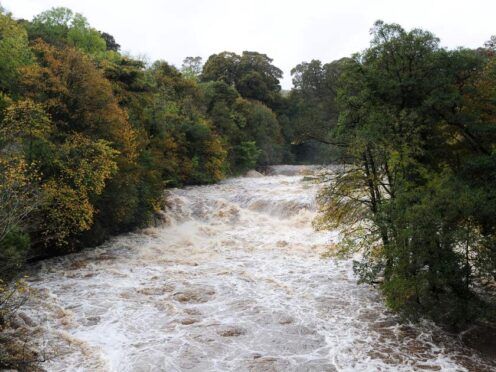The Environment Agency has been late to attend most serious pollution incidents over the past five years, according to an analysis by Greenpeace.
The environmental group’s investigation unit Unearthed obtained data on the agency’s attendance at pollution incidents between January 2017 and October 2023 under freedom of information (FOI) laws.
It found that the regulator has failed to meet its own response time targets for around three-quarters of England’s worst pollution incidents, which include major sewage, oil and slurry spills.
Multiple sources confirmed to Unearthed that environment officers are directed to attend the most serious incidents – known as “category 1 or 2” – within two hours during the working day, or four hours at other times.
But an analysis of the FOI data, released on Thursday, suggests the regulator failed to attend 74% of category 1 or 2 incidents within the targeted times.
For around a quarter of the category 1 and 2 incidents analysed – 947 out of a total 3,457 – the agency did not provide any record of the incident being attended at all, Unearthed said.
It took the agency more than a day to attend hundreds of these serious incidents and for hundreds more it was weeks or even months before an environment officer arrived on the scene, the analysis found.
In a minority of cases, an environment officer had recorded a legitimate reason for this non-attendance, such as Covid 19 or health and safety concerns.
But no specific reason was given for the non-attendance for the overwhelming majority, Unearthed said.
While the Environment Agency’s budget was increased last year, previous austerity cuts have prevented it from being able to carry out its job of fighting water pollution properly.
Doug Parr, Greenpeace UK’s policy director, said: “The Environment Agency has been so hamstrung by such savage funding cuts by successive Conservative governments that it’s now practically defunct.
“It is imperative, if we’re to clean up our sewage-ridden waterways and halt the decline of nature in this country, that the next government properly funds the agency set up to protect our environment.”
Attending major incidents late, or not at all, means the agency loses opportunities to reduce harm to the environment and makes it harder to gather evidence of criminal activity before the pollution dissipates.
Helen Nightingale, an ex-environment officer, who worked at the agency for more than three decades, said: “If no one attends, no evidence can be collected so the water company cannot be prosecuted.
“They get off scot-free. All cat 1 or 2 incidents should be attended, there’s no excuse.”
Meanwhile, former environment officer Jo Bradley, who now works for anti-pollution charity Stormwater Shepherds, told Unearthed: “There are things you can do to reduce the harm on the environment if you arrive on time.
“By arriving late those opportunities are gone.”
The agency disputed the idea that an attendance being marked as “blank” amounts to a no-show at the incident, which may have been attended to at a later stage.
It said it receives between 70,000-100,000 incident reports a year, ranging from pollution to coastal erosion and flooding and while attending in person is “important”, assessments can increasingly be done remotely.
Another reason why the regulator may not attend an incident immediately is if another authority is leading on the response, the regulator said, adding that it is “not accurate” to say that no immediate attendance means the agency is not playing a role in the incident response at all.
The regulator said it will always take action against water firms that are deliberately obstructive or misleading and has concluded 61 prosecutions against water and sewerage companies securing fines of over £150 million.
It is also conducting its largest-ever criminal investigation into potential widespread non-compliance by water and sewerage companies at thousands of sewage treatment works.
